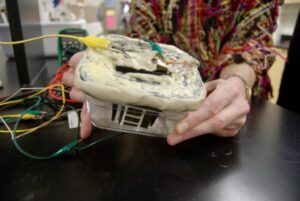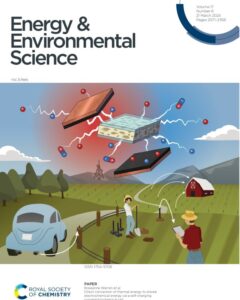
Today wirelessly connected devices are performing an expanding array of applications, such as monitoring the condition of engines and machinery and remote sensing in agricultural settings. Systems known as the “Internet of Things” (IoT), hold much potential for improving the efficiency and safety of the equipment.
Yet stumbling blocks remain for IoT, thwarting many potential applications. How do you power these devices in situations where and when reliable electrical sources are not practically available?
Research from the University of Utah’s College of Engineering points to a possible solution in the form of a novel type of battery called a pyroelectrochemical cell (PEC).
The device was developed and tested in the research labs of Roseanne Warren and Shad Roundy, both associate professors of mechanical engineering.

“It’s our idea for an integrated device that could harvest ambient thermal energy and convert it directly into stored electrochemical energy in the form of a supercapacitor or battery with applications for the Internet of things and distributed sensors,” said Warren, the senior author on a new study that demonstrates a proof of concept.
“We’re talking very low levels of energy harvesting, but the ability to have sensors that can be distributed and not need to be recharged in the field is the main advantage,” she added. “We explored the basic physics of it and found that it could generate a charge with an increase in temperature or a decrease in temperature.”
The study is the cover feature in the March 21 edition of the journal Energy & Environmental Science, published by the Royal Society of Chemistry.
Continue reading Brian Maffly’s “This device gathers, stores electricity in remote settings” at @theU.